The New Classics: Mission Impossible: Ghost Protocol
 Tuesday, August 13, 2019 at 10:00PM
Tuesday, August 13, 2019 at 10:00PM by Michael Cusumano
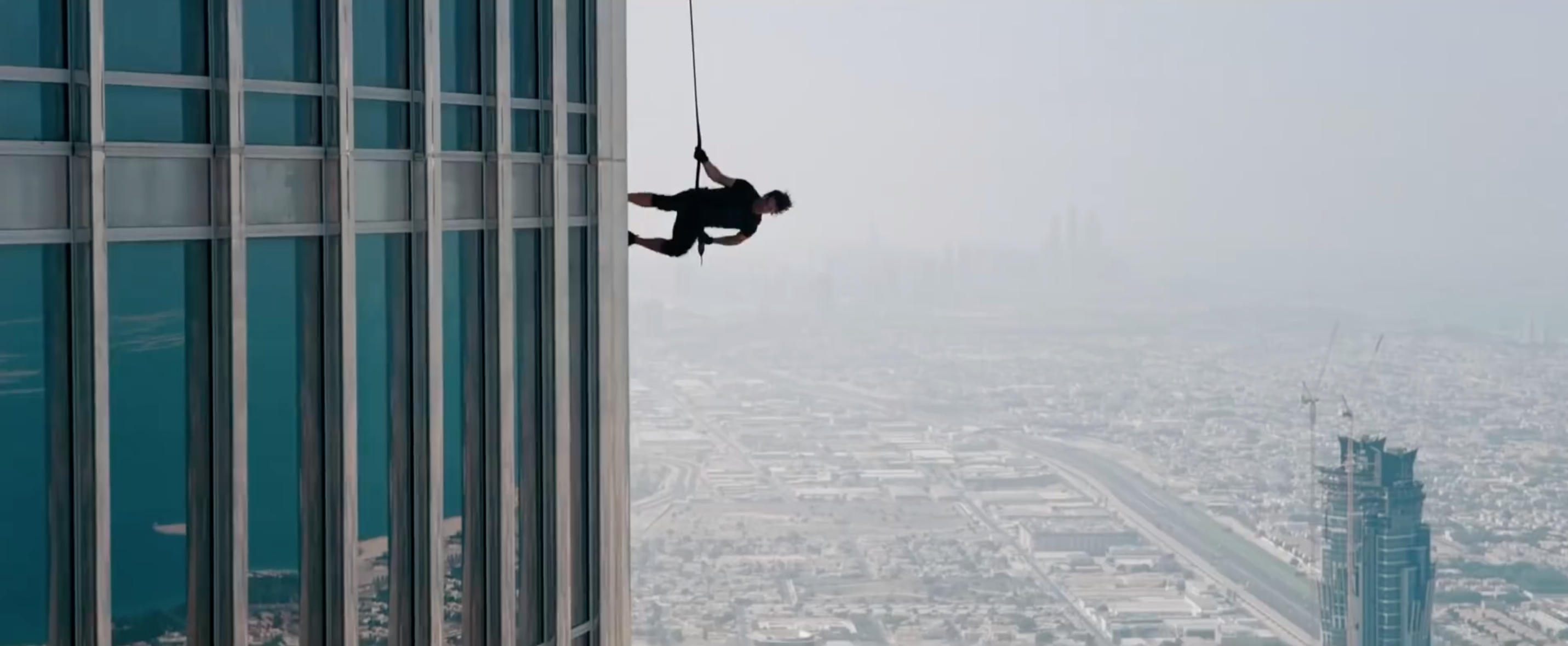
Scene: Scaling the Burj Khalifa
In the course of writing this column, I eventually got around to asking myself the inevitable question: “What is the 21st century scene I’ve watched the most times?”
I knew with certainty that the answer was the Burj Khalifa scene from Brad Bird’s Mission Impossible: Ghost Protocol, even if I couldn’t immediately account for the why. Of course you could simply say ”Why not?” It’s already firmly established in the pantheon of great action scenes. But it’s not like the past two decades have seen a dearth of great action filmmaking. Why not “Ship’s Mast” from Death Proof or the centerpiece car chase from Drive? What exactly is it about Tom Cruise pawing his way up the side of the world’s tallest building?
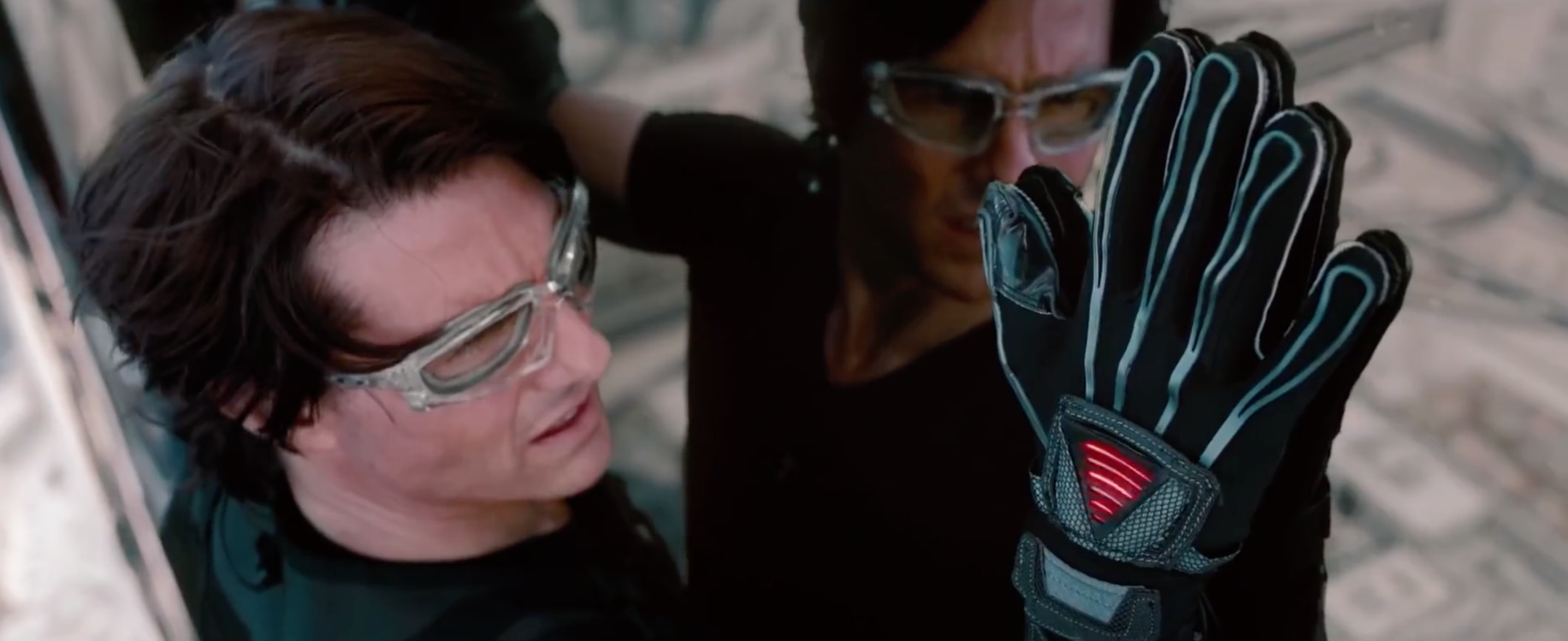
It’s not merely the gasp-inducing location, although the great Robert Elswit makes memorable use of it, providing no end of effectively vertiginous compositions. And it’s not just the fact that Cruise really dangled himself out there a hundred stories in the air, although the scene would be diminished were it not for Maverick’s mania for doing his own stunts.
I think the reason I respond to the scene the way I do is because it wows me first and foremost as a piece of writing. There is something so deep down satisfying about Bird’s way with set-ups and pay-offs. It has the cleanness of a balanced equation.
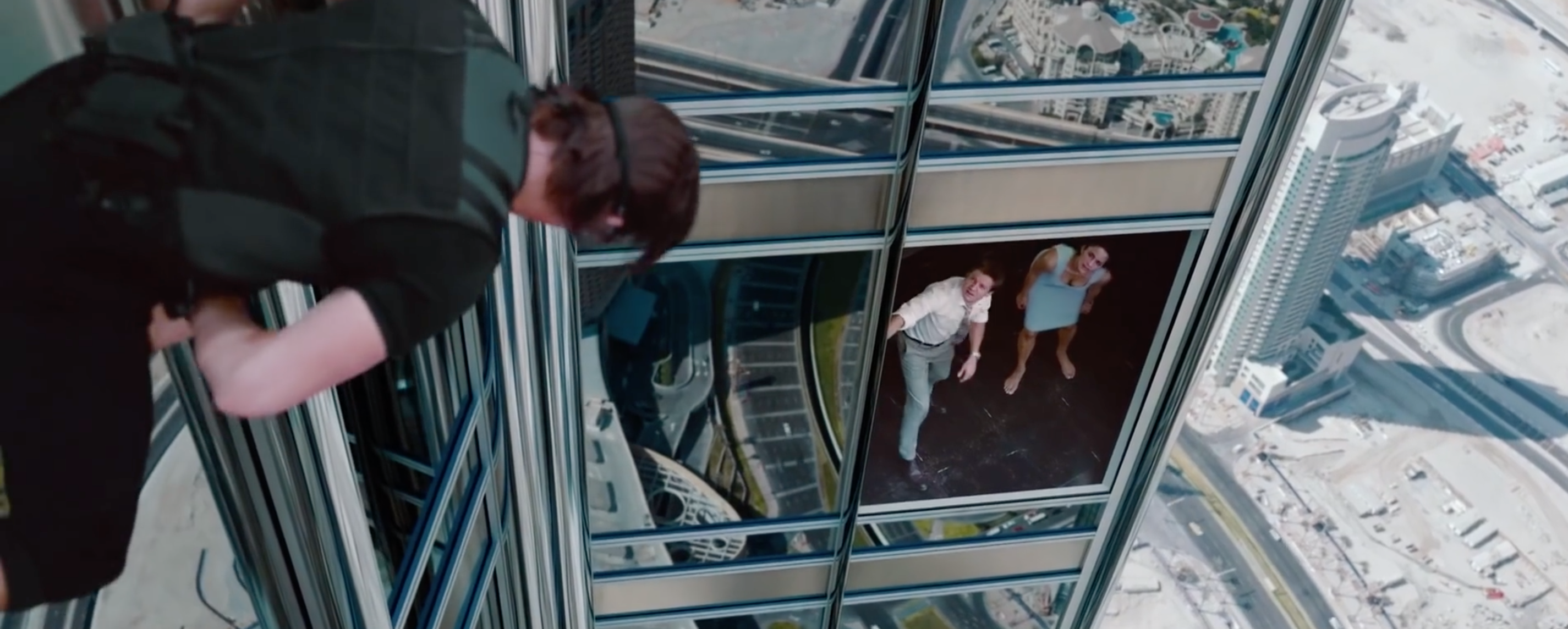
It’s said the difference between good writing and bad writing is whether you can separate the events of the plot with “therefore/but” or “and then”. If you can use “therefore/but” there is a conflict and escalation, whereas if you use “and then” you have a series of disconnected stuff happening. So many modern action scenes are a big pile of “and then.” They can distract from that fact with spectacle and gags, but we know an “and then” sequence when we get one. And while that kind of screenwriting can be killer in a trailer, it’s less engaging in the context of the film, and absolutely deadly on repeat viewings.
A “therefore/but” sequence, on the other hand, actually improves with familiarity, and the Burj Khalifa sequence is a supreme example. Cruise and his team are setting a trap for a maniac trying to acquire nuclear weapons THEREFORE they need to control the tower’s computer system BUT security is such that the only way they can access the server room is from the outside THEREFORE Ethan Hunt has to scale the world’s tallest building with some hi-tech gloves BUT they malfunction while he’s stuck to the side of the building… and so on, and so on. The sequence has some set-ups so subtle you didn’t even realize you were getting them until they payoff. Like the sparking glass cutter used to remove the window so Ethan can start his ascent. It reappears outside the server room to spark again and send Ethan plummeting. The whole thing is like a Fred Astaire dance sequence, no wasted moves, and light on its feet despite the rigorous precision.
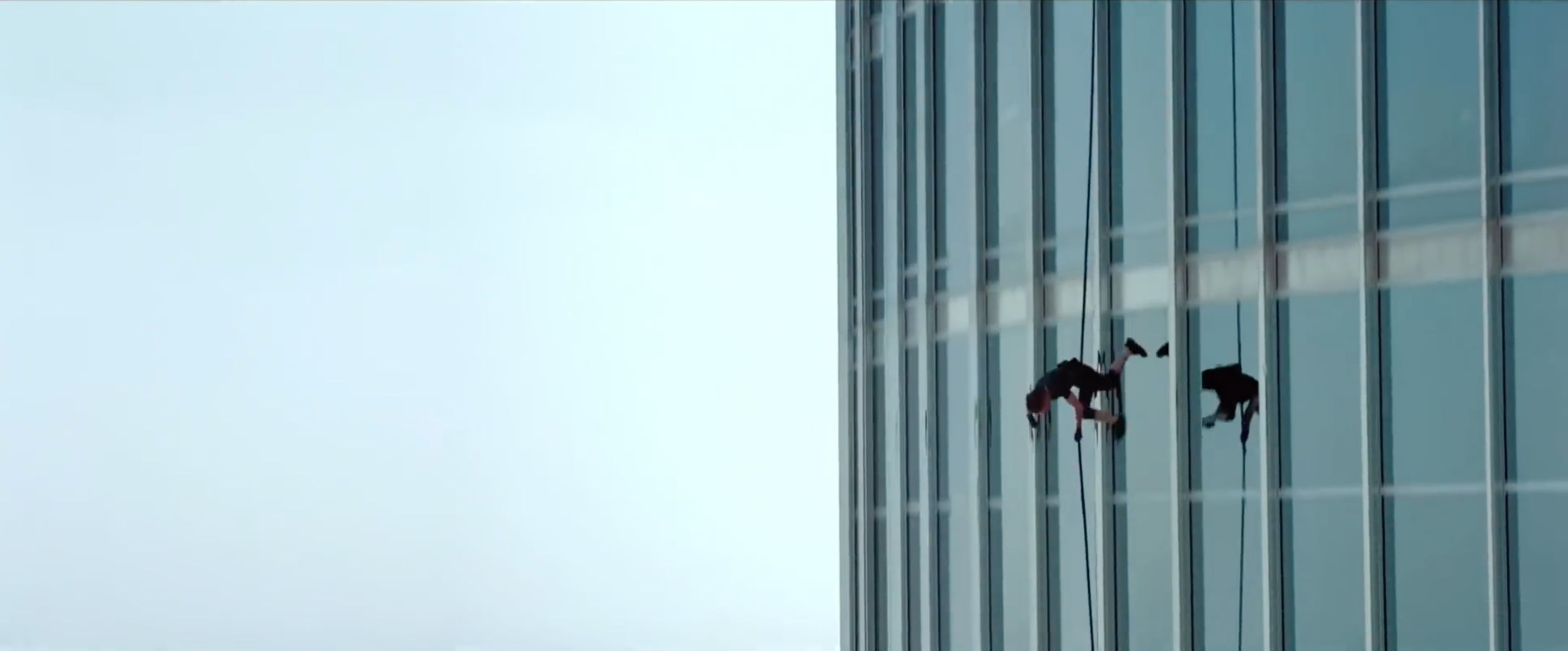
And it’s that lightness that really sets the scene apart. It actually features a terrific under-the-radar deadpan comedic performance from Cruise as he absorbs one mind-bogglingly terrifying development after another. Which brings up another reason the sequence works so well: It allows Cruise to be scared. Oh sure, he does whatever insane action hero gambit is required, and were you or I stuck in a room on the 130th floor, we’d stay there and politely starve to death before we hurled ourselves out the window with a hastily improvised rope. But prior to all the heroics Ethan does everything he can to NOT go out that window and when that makeshift rope proves too short he allows himself a flicker of panic. Those beats are what sell the suspense even if we know with 1000% certainty the sequence won’t end with an Ethan Hunt stain splatted across the Burj Khalifa’s parking lot. Harrison Ford understood those beats. The Indiana Jones series is a procession of Ford being scared shitless.
The final element that pushes this sequence over the top for me are the little grace notes that Bird sprinkles throughout. Like the way Ethan Hunt malfunctioning glove blows away on the wind only to reappear, stuck further up the tower, or the way the film takes the famous Tom Cruise Run and transposes it into a vertical plunge down the side of the building. One could argue McQuarrie matched Ghost Protocol’s action in his two Mission Impossible sequels, but I don’t believe any other entry has equaled Bird’s wit. He nails that elusive tone where he revels in the joy of the whole mad endeavor without sacrificing any of the dramatic urgency.
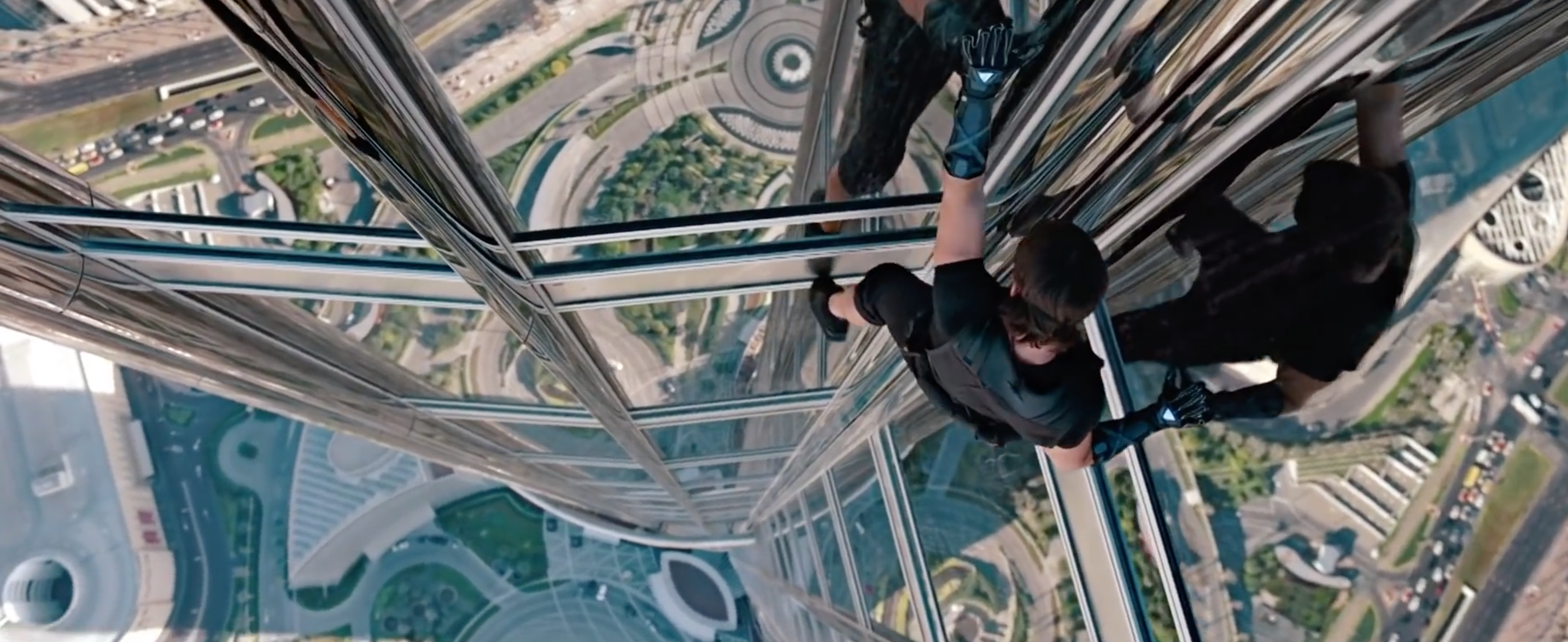
previously on The New Classics



Reader Comments (4)
What a wonderful piece. This is my favourite Mission Impossible movie by a considerable margin for the reasons you so articulately point out. I've never heard the "therefore/but" thing before and I love it. Great writing advice.
Do you have a link for the entire sequence you're describing? I can only find partial clips online.
Great analysis of why this scene (or any good action scene) works. There's a logical progression to the action. One reason why I like this scene over chase scenes like those you mentioned is that you can see Hunt problem-solve and strategize his way through the events that unfold, as opposed to car chases and martial arts throwdowns where the characters are mostly (necessarily) acting and reacting on instinct. That also separates the great Mission: Impossible scenes (this, the dangling theft from the first installment) from the mediocre ones where Cruise is just running and punching his way to safety.
It's a shame that Cruise has given up on challenging himself as an actor, THEREFORE denying us another Magnolia-level performance, BUT thankfully it's for a franchise at least worthy of his efforts/gifts. The Mission: Impossible movies, Ghost Protocol in particular, are really like nothing else, qualitatively, in Hollywood today.